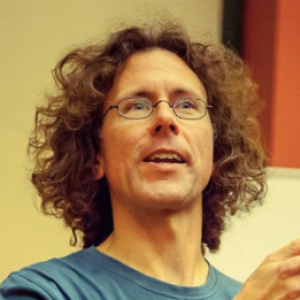- Published on
Q&A with Paul Klipp

I’ve done a lot of things, including prison chef, balloon artist, economics instructor, web designer, photographer, newspaper editor, author, trainer, event planner, project manager, and competitive intelligence analyst, so it’s hard to say what I do in general. I’ve learned that you needn’t do what you’ve been trained to do or what your job title suggests you should do. You don’t do what you are; you are what you’re doing. What I’m doing now is running a startup called Kanbanery.com. I’d been involved with the project for years, but only recently I’ve become responsible for it, and so I’m rapidly learning yet another skill set including UX design, design ethnography, customer development, growth hacking, and copywriting. It’s always more fun to have a job title you have to grow into than to have one that fits too well.
How did you get started in training and consulting?
I never intended to do training. I first got comfortable in a classroom when I got a job as a teaching assistant to the dean of my anthropology program as an undergrad. Then I taught English to immigrants on the weekends as a volunteer. In business school, I was unusually good at economics, and so I taught study sessions for my fellow students. When I wanted to travel, it turned out to be useful, because I got a job with a group of universities managing distance training programs and that often required that I lecture at universities in Central Europe on various business topics. After that, sharing what I know in front of an audience of any size was just comfortable, so when I see a demand for some skill I have (or want to learn), I simply organize a public training session and sell tickets. It’s a great way to meet people, learn about other environments, and make a bit of money as well.
What tools and software do you use for your work?
My favorite tool is the semi-structured interview, and ideally conducted in person. But given my location, I often have to use the phone or Skype.
But as for physical tools, my favorites are Moleskine notebooks, Blackwing pencils, Neuland markers, and full-screen text editors (I’m using iA Writer Pro now). My current favorite code editor is Brackets. I use Optimizely and usertesting.com for UI testing and Customer.io for email content tests. For graphic design, I use Illustrator and I’m suddenly finding myself very impressed with Sketch.
For managing the flow of all the intangible tasks that go into creating user experience, I use . . . wait for it . . . Kanbanery.com.
What are you working on now?
My immediate project is finding better ways to communicate the usefulness of online work visualization tools to people who need more clarity about what they or their team should be doing to advance their goals and continue to improve. Anyone in product management knows that’s too broad, so the immediate goal is to narrow my focus.
I’m doing that by gathering information about Kanbanery’s current users to look for common traits. They are a diverse group, including lawyers, software teams, startups, enterprises, construction companies, professors, moms, and medical practices, just to name a few I’ve met so far. Finding the commonalities so that I can speak with them in meaningful ways is my current biggest challenge.
What is your ideal work environment?
I do my best thinking in a quiet place, and so I usually get most of my work done in the early morning. I wake up at 3AM every day and I’d guess that 80% of my daily work is done by 7AM. During the daylight hours, I’m mostly engaged in data gathering, learning, observing, and relationship building. Just like Santa, the magic happens while the world sleeps.
Where are your favorite places for sharing experiences?
I blog when I have something to share, but I really value short feedback loops and the experiences of others, so my ideal environment for sharing is in an small group of people.
One of my favorite formats for learning from others is Lean Coffee, which was invented by a friend of mine, Jim Benson, who wrote the book Personal Kanban. It’s a meeting format that is ideal for structuring conversations in small groups.
I also like speaking at conferences, because after I’ve shared my story, I enjoy the many face to face conversations that happen as people approach me to share theirs.
Who are the creatives you admire most?
I’m most impressed by creative people who not only do great work, but inspire others to do creative work. That would include Amanda Palmer, Mike Rohde (see interview on WSP), Melissa Perri, Adrian Howard, Genevieve Bell and Tim Brown come to mind. They are all very public about their process in a way which is approachable and inspirational to many.